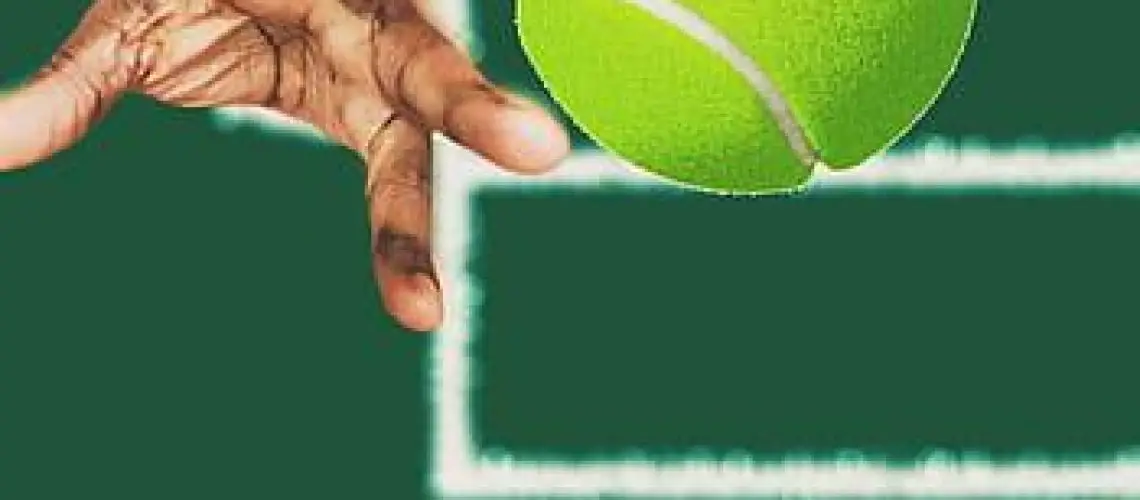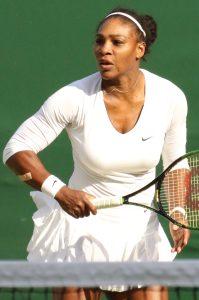We may earn money or products from the companies mentioned in this post.
Introduction
Table tennis, also known as ping pong, is a fast-paced and thrilling sport that requires agility, precision, and strategy One of the key components that greatly impacts the game is the table tennis rubber These rubbers are attached to the blade of the racket and play a crucial role in determining the speed, spin, and control of the ball
Definition and Purpose of Table Tennis Rubbers
Table tennis rubbers consist of a layer of specialized rubber material affixed to both sides of the racket blade The rubber surface interacts with the ball during gameplay, enabling players to generate various types of spins and control their shots effectively
The primary purpose of table tennis rubbers is to enhance player performance by providing them with more control over their shots The rubbers enable players to impart different types of spin on the ball – topspin, backspin, or sidespin – allowing for greater variation in shot placement and trajectory
Different Types of Table Tennis Rubbers
There are two main categories when it comes to table tennis rubbers: pimple-in (or inverted) rubbers and pimple-out (or long pimple) rubbers Each type offers unique characteristics that cater to different playing styles
Pimple-in rubbers have a smooth surface with small pimples facing inward towards the sponge They provide excellent grip on the ball, allowing players to generate significant amounts of spin Pimple-in rubbers are versatile options suitable for all-around players who prioritize control and spin in their gameplay
On the other hand, pimple-out rubbers have outward-facing pimples that vary in size and shape These rubbers tend to produce less spin compared to pimple-in varieties but offer deceptive effects due to irregular ball trajectories caused by their pimples’ irregularities Pimple-out rubbers are favored by defensive players who rely on blocking and counter-attacking techniques
Conclusion
Understanding table tennis rubbers is essential for players looking to improve their game With the right rubber choice, players can enhance their control, spin, and speed, giving them a competitive edge on the table tennis court Whether it’s pimple-in rubbers for greater spin or pimple-out rubbers for deceptive shots, selecting the right rubber can make all the difference in one’s performance So grab your racket, find the perfect rubber match, and get ready to dominate the table!
Type of Rubber

When it comes to the lifespan of table tennis rubbers, the type of rubber you choose plays a crucial role There are two main types: inverted and pimpled rubbers Inverted rubbers have a smooth surface, providing better control and spin On the other hand, pimpled rubbers have small pimples on their surface, which can generate unpredictable shots The durability of these rubbers can vary depending on how they are used and maintained
Inverted vs Pimpled Rubbers
Both inverted and pimpled rubbers have their advantages and disadvantages in terms of lifespan Inverted rubbers tend to last longer due to their smoother surface, which is less prone to wear and tear Pimpled rubbers, however, may wear out faster as the pimples can become damaged or worn down over time with regular use
Tacky vs Non-tacky Surfaces
The tackiness or stickiness of a rubber surface also affects its lifespan Tacky surfaces provide better grip on the ball, allowing for increased spin and control during gameplay However, this tackiness can diminish over time with repeated use, resulting in a shorter lifespan for the rubber Non-tacky surfaces may not offer as much spin initially but tend to be more durable in the long run
Frequency and Intensity of Play

Another factor that significantly impacts the lifespan of table tennis rubbers is how frequently and intensely they are used Casual players who engage in occasional games may find their rubbers lasting longer compared to competitive players who practice extensively and participate in regular matches
Casual Players vs Competitive Players
The amount of time spent practicing per week and the frequency of matches can determine how quickly the rubber wears out Competitive players who spend several hours practicing and participate in frequent matches put more strain on their rubbers, leading to a shorter lifespan compared to casual players who play less frequently
Practice Hours per Week
The more hours spent practicing each week, the faster the rubber will wear out The constant contact with the ball and the friction generated during practice sessions contribute to the gradual deterioration of the rubber’s performance over time
Match Frequency
Frequent participation in matches also accelerates rubber wear The intense gameplay, constant impact from shots, and increased spin demand placed on the rubber can significantly reduce its lifespan
Maintenance and Care

Proper maintenance and care play a vital role in preserving the lifespan of table tennis rubbers Neglecting these essential practices can result in premature deterioration of your rubber surface
Proper Cleaning Techniques
Cleaning your table tennis rubbers regularly using appropriate cleaners and methods is crucial for extending their lifespan Using specialized cleaning solutions designed specifically for rubbers helps remove dirt, sweat, and dust particles that accumulate during gameplay Improper cleaning techniques or using abrasive substances can damage the rubber surface and shorten its lifespan
Impact of Improper Cleaning on Rubber Lifespan
If not cleaned properly or as frequently as needed, debris buildup can affect both tacky and non-tacky surfaces This accumulation hampers the rubber’s ability to generate spin effectively while also reducing overall control during gameplay Regular cleaning ensures optimal performance while prolonging the life of your rubbers
Storage Conditions

The way you store your table tennis rubbers when they are not in use significantly impacts their lifespan Proper storage conditions protect against external factors that can degrade the rubber’s performance
Temperature and Humidity Levels
Extreme temperature fluctuations and high humidity levels can negatively affect the quality and durability of table tennis rubbers Storing them in a cool, dry place helps prevent warping, cracking, or degradation caused by moisture or heat exposure
Protective Measures, like Rubber Protect Sheets
Using protective covers like rubber protect sheets when storing your rubbers is highly recommended These covers shield the surface from dust, sunlight, and other elements that may deteriorate the rubber over time Investing in proper storage equipment ensures your rubbers remain in top condition for longer periods
Signs that your table tennis rubber needs replacing

Physical signs
One of the first indicators that your table tennis rubber may need replacing is visible wear and tear Over time, the surface texture of the rubber can become worn down or even change altogether You might notice a loss of grip or smoothness on the rubber’s surface, which can affect your ability to generate spin or control the ball effectively
In addition to changes in surface texture, another physical sign to watch out for is peeling edges or a cracked surface As your rubber ages, it can start to deteriorate at the edges, causing them to peel away from the blade or develop cracks These imperfections not only impact the performance but also increase the risk of further damage
Performance-based signs
Aside from physical signs, there are also performance-based indicators that suggest it’s time to replace your table tennis rubber One common sign is a noticeable decrease in speed, control, or spin during gameplay If you find that your shots lack their usual zip and precision, it could be due to a worn-out rubber that no longer provides the necessary grip and elasticity
Another performance-based sign is difficulty executing specific shots If you suddenly struggle with certain techniques or find it harder to generate consistent spin on serves and loops, it may be because your rubber has lost its ability to produce optimal friction with the ball
By keeping an eye out for these signs – both physical and performance-related – you can ensure that you replace your table tennis rubber at the right time Regularly inspecting your equipment will help maintain optimal playing conditions and allow you to continue enjoying your favorite game with maximum performance
Recommendations for Extending the Life of Table Tennis Rubbers and When to Replace Them

Maintenance Tips
When it comes to prolonging the lifespan of your table tennis rubbers, proper maintenance is crucial Implementing a regular cleaning schedule will help remove dirt and debris that can accumulate on the surface A quick wipe with a clean sponge or cloth after each session can go a long way in preserving their performance
In addition, investing in quality products like protective films can provide an extra layer of defense against wear and tear These films act as a shield, preventing direct contact between the rubber and the playing surface, ultimately extending the life of your rubbers
Establishing Replacement Timelines Based on Personal Factors
Knowing when to replace your table tennis rubbers depends on various factors such as your level of play and frequency of use For casual players who engage in occasional matches, a general guideline is to consider replacing rubbers every six months to one year
On the other hand, competitive players who regularly participate in intense training sessions or tournaments may need to replace their rubbers more frequently In this case, it’s advisable to consider replacing them approximately every three months to ensure optimal performance on the table
Considering Alternative Solutions for Worn-Out Rubbers
If you notice signs of wear and tear on your table tennis rubbers but they are not completely worn out yet, there are some alternative solutions worth exploring before opting for full replacement
One option is re-gluing loose edges using an appropriate adhesive specifically designed for table tennis rubbers This method can help restore stability and extend the usability of your rubbers temporarily However, keep in mind that this solution may only be effective if the rubber itself is still in good condition
Another valuable approach is seeking advice from experienced players or coaches They can provide valuable insights and recommendations on how to prolong the life of your rubbers or offer alternative solutions based on their own experiences
By implementing these recommendations, you can significantly extend the lifespan of your table tennis rubbers, ensuring they maintain optimal performance for longer periods Remember that proper maintenance and timely replacement are key to achieving consistent results on the table
Useful Links

How Often Should You Replace Your Table Tennis Rubbers?
Shelf life of a rubber
Rubber Information
How To Choose Your Table Tennis Rubber
How to look after your table tennis bat
How long do table tennis rubbers last before they wear out?
Guide to Choosing Table Tennis Rubber
Table tennis rubber
The 10 Best Table Tennis Rubbers in 2023
Butterfly Table Tennis Rubber Guide
How to maintain the stickiness of table tennis rubbers
Buy Ping Pong Rubber
How often should I change my rubber?
Table Tennis Rubber: Hard vs. Soft | The comparison – TT-Spin
6 Best Table Tennis Rubbers Selection (Jun. 2023)
Table tennis rubber guide
Table Tennis / Ping Pong Rubber at Paddle Palace
How to Replace Ping Pong Paddle Rubber and Play Better






